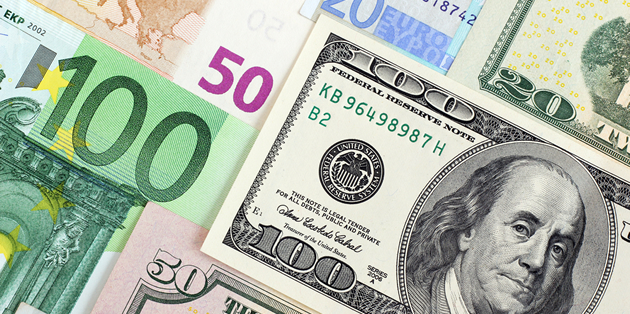Thursday morning saw Pound exchange rates rally strongly, with GBP recording sizable gains against the Euro and US Dollar as confidence was boosted by an unexpected increase in UK consumer demand following the referendum result.
While the Pound edged down from its best rates before the weekend, the currency remains well up on its weekly lows. The only UK data scheduled for publication on Friday is UK public borrowing data. Results which differ significantly from forecasts could trigger some GBP to EUR, USD volatility.
- UK Claimant Count and Retail Sales data bettered forecast – Pound trends higher on back of reduced Brexit worries
- Eurozone Construction Output recovered in June – GBP EUR exchange rate nevertheless held onto gains
- US Dollar returned to downtrend after dovish Fed minutes – Chances of 2016 rate hike diminished afresh
- GBP exchange rates forecast to remain under pressure – Market uncertainty unlikely to ease significantly in near term
While the Pound has performed well this week on the back of better-than-forecast domestic data, demand for the Euro (EUR) has been strengthened by the renewed softness of the US Dollar (USD), which was weighed down by the dovish tone of the latest Fed meeting minutes.
The odds of whether the Federal Reserve will introduce an interest hike in September are constantly shifting, but many industry experts believe the central bank will refrain from taking such potentially destabilising action ahead of the US Presidential election in November.
Bullish UK Data Boosts Pound Exchange Rates as Brexit Worries Ease
July’s UK Claimant Count provided a pleasant upside surprise for the Pound (GBP), failing to show the negative impact from the Brexit vote that investors had anticipated. The number of those claiming for unemployment benefit was found to have fallen by 8,600 in the last month, as opposed to the rise of 9,000 that had been forecast. This naturally prompted Sterling to rally strongly, with worries over the detrimental impact of the vote to leave the EU at least temporarily eased. Markets were also pleased to see that wages had continued to grow in the three months to August, a trend that suggests the economy was in a stronger position ahead of the referendum.
Further support for GBP exchange rates came in the form of July’s Retail Sales figures, which also bettered expectations. Rather than holding steady at 3.9% on the year, sales instead surged 5.4%, a result which suggested that confidence within the domestic economy was not quite as dire as initially anticipated. However, at least some of this growth seems attributable to good summer weather and investors maintain a note of caution over the importance of consumption data in the current climate of economic uncertainty.
Euro (EUR) Strengthened by Improved Eurozone Construction Output
The Euro (EUR) remained generally in favour with investors on Wednesday, in spite of the relative strength of the US Dollar (USD). Markets had been encouraged by signs that the Eurozone had been quick to shrug off the atmosphere of uncertainty that had followed the Brexit shock. This more optimistic outlook helped to keep the single currency on stronger form even with a lack of fresh domestic data, particularly as a mood of risk aversion prevailed.
Unsurprisingly there was no change in the finalised Eurozone Consumer Price Index for July, an encouraging sign as inflation had edged 0.2% higher on the year. As a result the European Central Bank (ECB) is likely to feel less pressure to loosen monetary policy in the near future, with hopes that the domestic inflation situation will continue to show signs of improvement. Encouragingly June’s Construction Output showed a strong recovery, jumping from -0.8% to 0.6% on the year. Even so, with the Pound on bullish form this was not enough to dent the GBP EUR exchange rate.
Less Hawkish Fed Minutes Dampen US Dollar (USD) Demand
Despite the bearishness of the week’s US data the ‘Greenback’ returned to an uptrend thanks to hawkish commentary from the New York and Atlanta Fed Presidents. Both policymakers indicated that a 2016 interest rate hike remained a possibility, leading investors to rapidly price in higher odds of an imminent move. However, the Pound to US Dollar (GBP USD) exchange rate was able to regain some ground overnight thanks to the release of the Federal Open Market Committee’s (FOMC) July meeting minutes. Policymakers were ultimately found to have remained split over the possibility of a return to the monetary tightening cycle, prompting the ‘Greenback’ to soften in response.
As analysts at Westpac noted:
‘Market pricing of the Fed funds rate slipped, implying around a 20% chance of a rate hike in September, a 55% chance by December, and 100% by Sep 2017. Fed dove Bullard repeated his view that only one hike was likely over the next two years.’
With imminent action looking rather more unlikely the US Dollar has fallen out of favour with investors, unwinding some of its recent gains. If the afternoon’s jobless claims and Philadelphia Fed Index prove disappointing then the GBP USD exchange rate could extend its uptrend. On the other hand, fresh signs of robustness within the world’s largest economy may encourage a greater measure of confidence in the ‘Buck’.
Current GBP, EUR, USD Exchange Rates
At the time of writing, the Pound to Euro (GBP EUR) exchange rate was trending higher around 1.1617, while the Pound to US Dollar (GBP USD) pairing was on an uptrend in the region of 1.3159.



